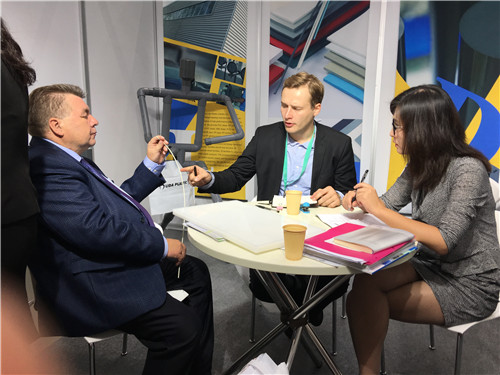វិច្ឆិកា . 03, 2024 06:50 Back to list
pp welding rod
Understanding PP Welding Rods Applications and Advantages
Polypropylene (PP) welding rods are essential materials in the field of plastic fabrication and repair. As a thermoplastic polymer, polypropylene is known for its versatility, strength, and resistance to various chemicals, making it an ideal choice for numerous applications in industries ranging from automotive to packaging. This article will explore the characteristics, applications, and advantages of PP welding rods.
Characteristics of PP Welding Rods
PP welding rods are produced from polypropylene resin and come in various diameters and lengths to suit different welding techniques. The rods are characterized by their excellent tensile strength, low density, and high resistance to corrosive chemicals and moisture. One remarkable feature of polypropylene is its ability to be easily molded and shaped when heated, allowing for seamless joining with PP sheets, tanks, and other polypropylene components through welding processes.
In addition, PP welding rods can withstand temperatures up to 100 degrees Celsius (212 degrees Fahrenheit) without losing their structural integrity, making them suitable for a variety of high-temperature applications. Furthermore, compared to other thermoplastics, polypropylene is lighter in weight, which is a significant advantage in reducing overall material costs and enhancing the efficiency of the final product.
Applications of PP Welding Rods
The use of PP welding rods spans various sectors. In the automotive industry, these rods are often used to repair or reinforce plastic interiors and components, such as dashboards and light housings. The lightweight nature of polypropylene helps reduce the overall weight of vehicles, contributing to fuel efficiency.
In the construction and manufacturing sectors, PP welding rods serve as an excellent choice for fabricating storage tanks, pipes, and other components that require strong and durable connections. Their high resistance to chemicals makes them particularly useful in chemical processing plants, where corrosion resistance is paramount.
pp welding rod

Moreover, the food processing industry utilizes PP welding rods due to their non-toxic characteristics, which comply with safety standards regarding food contact. This ensures that food products remain uncontaminated during storage and transportation.
Advantages of Using PP Welding Rods
One of the primary benefits of using PP welding rods is the ease of welding and fabrication. The welding process involves heating the rod and the substrate until they melt and fuse together, creating a strong and durable bond. This process can be completed with various welding techniques, including hot air welding and extrusion welding.
Another significant advantage is the cost-effectiveness of polypropylene welding rods. They are generally less expensive than other materials, such as PVC or polyethylene, while still providing comparable strength and resistance. This affordability makes them accessible for small-scale and large-scale applications alike.
Lastly, their lightweight nature can lead to lower shipping costs and easier handling during the manufacturing process. With the growing emphasis on sustainable practices, the recyclability of polypropylene also enhances its appeal as a choice for environmentally conscious manufacturers.
Conclusion
In summary, PP welding rods are a valuable resource in a multitude of industries due to their unique properties, versatility, and cost-effectiveness. Their ability to create strong, durable joints opens up numerous possibilities for innovative applications, making them an integral material in the realm of plastic welding and fabrication. As industries continue to evolve, the demand for efficient and reliable materials like PP welding rods will undoubtedly grow.
-
Durable PP Rigid Sheet: Lightweight, Chemical Resistant Solutions
NewsAug.21,2025
-
PVC Grey Sheet for Extraction: Chemical Resistant & Durable
NewsAug.19,2025
-
Durable PVC Pipe Fittings for Plumbing & Irrigation Needs
NewsAug.18,2025
-
HDPE Steel Belt Reinforced Spiral Corrugated Pipe | High Strength
NewsAug.17,2025
-
HDPE Pipe Fittings: Durable, Leak-Proof Solutions
NewsAug.16,2025
-
Premium CPVC Sheet: High-Temp & Chemical Resistant Solutions
NewsAug.15,2025

